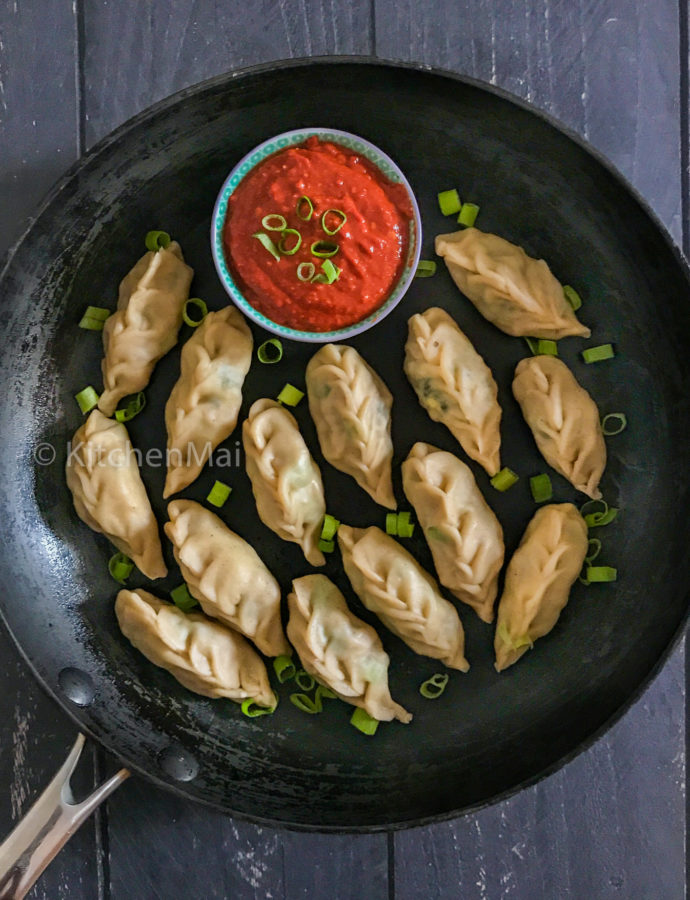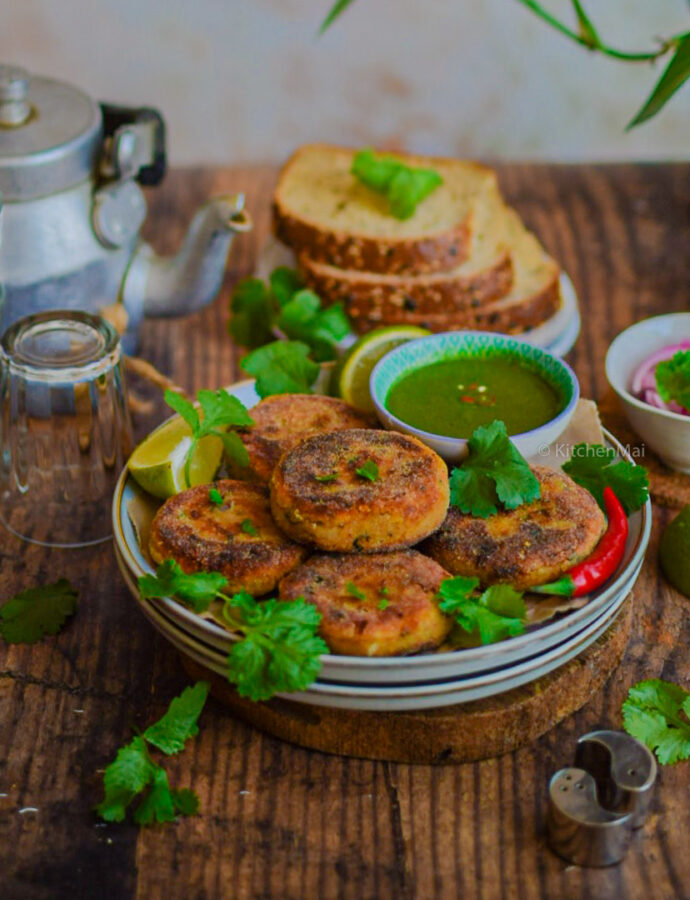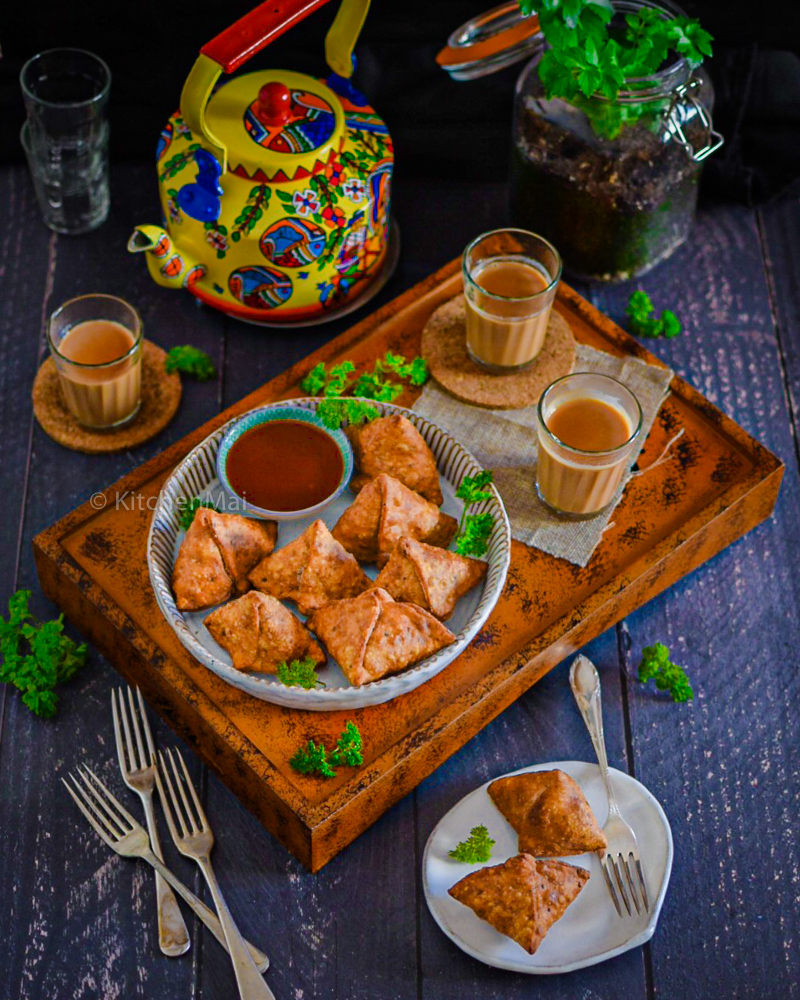
This recipe post was long due! Given that how amazing the singara (Bengali potatoes and cauliflower samosa) tastes, I should have shared this recipe much earlier. Nonetheless, better later than never, right? A lot of you may not know of this samosa version because it isn’t as popular as it’s Punjabi counter part. But it still is quite a well known one. These are sold in almost all sweet shops across West Bengal. However, my recipe is from my home and not these shops. This is my dida’s (maternal grandmother) recipe. And everyone in the family swears by it, it is that good. Every celebration at her home meant dida would make these singaras. Likewise, the tradition still continues at my mother’s place.
Now, let me tell you how is it different from Punjabi samosas and what makes singaras so special. First, the filling also has cauliflower besides potatoes, in the Bengali version. Second, these are flavoured with bhaja moshla, meaning roasted and ground whole spices. This fragrant spice blend is an essential pantry ingredient in Bengali kitchens. Thirdly, the singara (pronounced as sheenghara) is sweetish. Yes, these are a mix of savoury, sweet and very subtle heat. So, you see the Bengali samosas are more fragrant than spicy. And finally, the wrappers are made of plain flour and not whole wheat flour. However, I have made mine with whole wheat flour, that’s why the lovely brown colour on them. Otherwise, the singaras have a much lighter body colour. More whitish to be specific, because of the maida.
You may also like,
Tandoori gobhi (spiced and grilled cauliflower)

Making the singara
If you ask me whether making samosas or singaras are easy, I’d say that they actually are. To put to more accurately, they are not difficult to make, but maybe somewhat crafty. However, having said that, once you get hold of the folding technique, everything else is a cake walk, really. And I have tried my best with the pictorials below to show how that’s done. So, I hope that will help. 🙂
Now, let’s talk about the singara or Bengali potatoes and cauliflower samosa stuffing. Like I said, it is more fragrant than it is spicy. All because if the bhaja moshla that goes in. And that is the only masala that you will be adding. The bhaja moshla is a blend of dry roasted cumin seeds, dried red chilis, cinnamon, cardamom and cloves. This flavour packed masala is the heart of this recipe. At least in my dida’s recipe, which I go by just as is. Moreover, there is nothing more to add because this one spice mix takes care of the entire taste. And because this is such a hit in our family and whoever has had it, there are no changes I make to this prized recipe.
The filling
Since the singaras have cauliflowers also as a main component in the stuffing, they taste best when made with seasonal produce. Hence, this is actually a winter recipe, because that’s when cauliflowers are in season in India. Additionally, the stuffing also has green peas in it, which is yet another winter produce. But, I make these whenever a craving hits! And because they always taste yummy, you will find me making these not just in the winters. Besides the potatoes, cauliflowers and the peas, this lip smacking snack also has some crushed, roasted peanuts in too. So, you have the flaky, crisp singara crust and then the delicious veggie filling along with peanuts to bite into! Sounds so yum, right?
One thing to keep in mind while cooking the potatoes and cauliflower florets is to not make sure that they don’t turn mushy. While that is very easy to do since they are cut in bite sized pieces, you could still avoid it. And that is by stir frying and cooking them first, without adding any salt. Always add the salt, once they cook completely. If you add salt in the beginning, the veggies will release moisture in which when they keep cooking, making them mushy. And we really don’t want that. By adding the salt when we add the rest of the spices, later, the vegetables will retain their shapes. This, in fact tastes the best when bit into, rather than a vegetable mush.
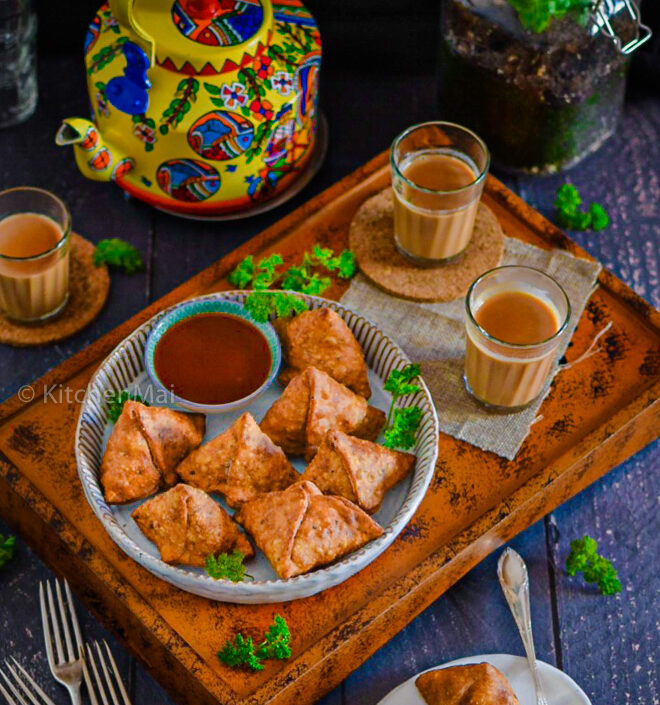

Serving suggestions
I love serving my sigaras hot alongside freshly brewed cha (chai). Unlike the Punjabi ones, singras don’t really taste great with a mint coriander chutney. These delicately flavoured Bengali samosas pack a punch on their own. If at all, you could serve ketchup on the side. You can enjoy these as an evening snack or even for your weekend brunch. You can also serve these as a party appetizer and you will have a pretty happy audience. 🙂
Are you planning to make these singaras? I’d love to see how they turned out for you. You could share your Bengali samosa pictures with me on Instagram. Or you could even drop me line with your feedback in the comments section below.
Eat hearty!
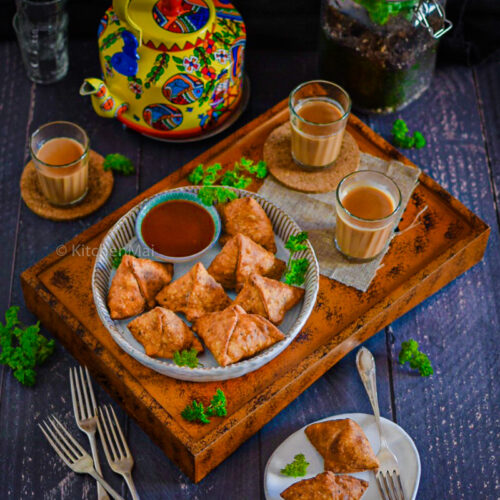

Singara (Bengali potatoes and cauliflower samosa)
Equipment
- Shallow cooking pot
Ingredients
- 2 cups cauliflower florets
- 2 cups potatoes cut into 2 cm cubes
- 1 cup green peas fresh/frozen
- 1 fresh green chili optional
- ¼ cup roasted peanuts crushed
- 4-5 dried red chilis
- 1 tbsp black peppercorns
- 1 inch cinnamon stick
- 3-4 cardamoms
- 3-4 cloves
- 1 tbsp cumin seeds
- 1 tbsp sugar
- ½ cup vegetable oil for frying
- 1 cup whole wheat flour
- 1 tsp carom seeds ajwain
- 1 tsp salt + salt for the filling
Instructions
- Mix the flour with a teaspoon of salt, carom seeds and a tablespoon of oil. Knead a tight dough, using little water at a time and keep it aside covered with a damp cloth. I needed less than ½ cup of water to form the dough

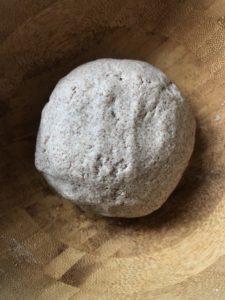
- Dry roast all the whole spices (cinnamon, cardamom, cloves, dried chilis, peppercorns) until fragrant. Cool it down to room temperature and then grind it to a fine powder. This is the Bengali bhaja moshla

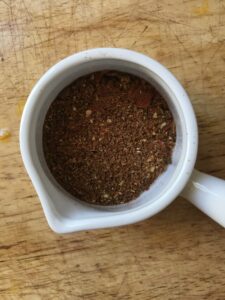
- Heat a cooking pot with a tbsp of oil and add the cauliflower and potatoes. Stir fry on high heat for 5 minutes, then lower the flame and cook covered, stirring intermittently*, until the vegetables are almost cooked. Don't add the salt now otherwise they will turn mushy

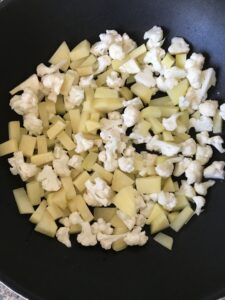
- Once done, add the peas, chilis, peanuts, sugar and salt. Mix in well

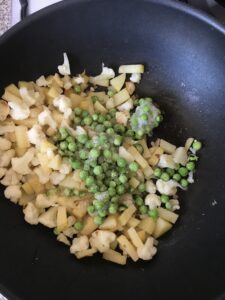
- Turn the flame off, once the peas also cook and add 2 tablespoons of the bhaja moshla. Remove this in a bowl and let it cool down. Check here for taste and adjust if needed. This is your singara filling

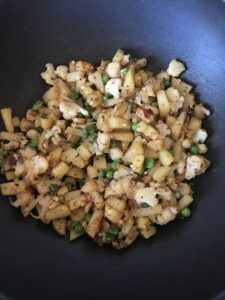
- Get back to your singara dough and work it one more time. Pinch out 5 equal sized balls from it. Flatten one out, apply some oil and roll it out thin and oval in shape. Divide it into two equal parts using a knife


- Apply water on all edges and fold one side of the base over the other, to create a pocket as shown, and press gently to seal

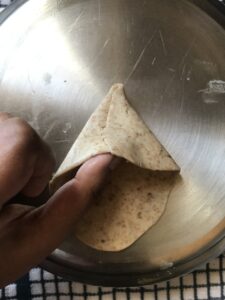
- Hold this cone in the gap of your thumb and index finger. Spoon in about 2 tablespoons (or as much it holds) of the singara filling in

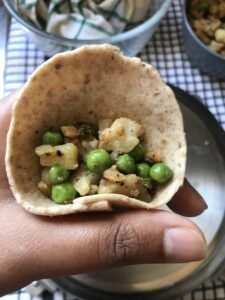
- Pleat the centre of the curved end and bring it to the front end and press to seal. Press the left and right hand sides, also, onto each other and seal well

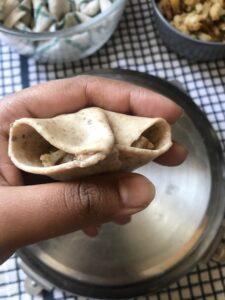
- Place your shaped singaras on a flour dusted tray. At this point you could freeze them to fry at a later time, too


- Over medium low flame, keep the oil for frying in a wok, and drop in the singaras. Don't over crowd your wok and fry until each of them is well browned all over. When done remove on a kitchen towel, for the excess oil to drain

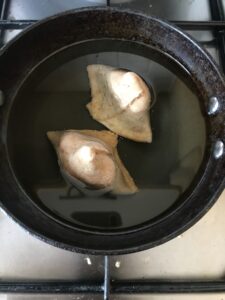
- Serve your lip smacking singaras or Bengali potatoes and cauliflower samosa with ketchup, along side some chai. Enjoy!

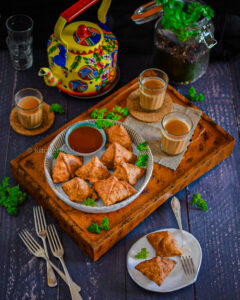
Notes
- *If the vegetable start sticking to the pan, add splashes of hot water to de-glaze and continue cooking
- You can even use maida/plain flour for the samosa wrappers. That is what is traditionally used and not whole wheat flour
- Adding the sugar balances out the salt in these Bengali samosas (singara). It is supposed to have a hint of sweetness
- I was able to make 10 medium singaras with these quantities
- You may not need the entire bhaja moshla prepared here. You can store the excess in an air tight jar and use it to flavour other Bengali vegetarian fares, your yoghurt etc
- 1 cup = 250 millilitres
- tbsp - tablespoon
- tsp - teaspoon
- cm - centimetre





